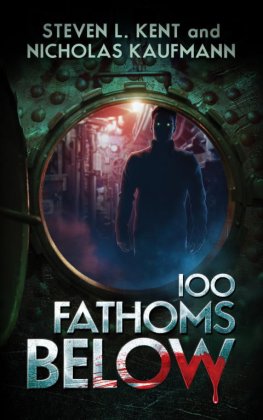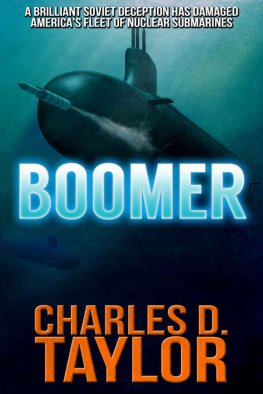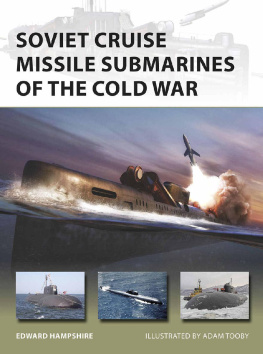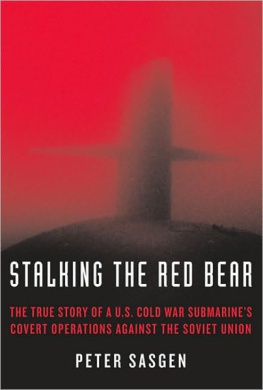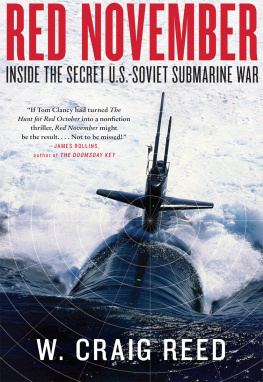
SPY SUB


The book has been brought to publication with the generous assistance of Marguerite and Gerry Lenfest.
Naval Institute Press
291 Wood Road
Annapolis, MD 21402
1996 by Roger C. Dunham
All rights reserved. No part of this book may be reproduced or utilized in any form or by any means, electronic or mechanical, including photocopying and recording, or by any information storage and retrieval system, without permission in writing from the publisher.
First Naval Institute Press paperback edition published in 2015.
ISBN: 978-1-61251-827-5 (ebook)
The Library of Congress has cataloged the hardcover edition as follows:
Dunham, Roger C., 1944-
Spy Sub: A top secret mission to the bottom of the Pacific / Roger C. Dunham.
p. cm.
Include bibliographical references and index.
ISBN 1-55750-178-5 (cloth: alk. paper)
1. Intelligence serviceUnited States. 2. United States. NavySubmarine forces. 3. Soviet Union. Voenno-Morsko FlotSubmarine forces. 4. Submarine disastersSoviet Union. I. Title.
VB231.U54D86 1996
359.9330973-dc20
96-10576

 Print editions meet the requirements of ANSI/NISO z39.48-1992 (Permanence of Paper).
Print editions meet the requirements of ANSI/NISO z39.48-1992 (Permanence of Paper).
23 22 21 20 19 18 17 16 15 9 8 7 6 5 4 3 2 1
First printing

To the men, on patrol beneath the seas, who serve our country in the United States Submarine Service


CONTENTS



THE CONFIDENTIAL NATURE OF THIS PROJECT prevents credit to many people who are well deserving of tribute for their assistance. I received encouragement and help from several of my shipmates, and I am thankful for invaluable assistance from Chief Warrant Officer Sandy Harless, USN (Ret.); Captain C. E. Moore, USN (Ret.); and Senior Chief Petty Officer Gary Patterson, USN (Ret.). Sandy Munroe and Val Muth provided encouragement and helpful information used in developing the story. John P. Craven, Ph.D., provided details that were useful in many ways, and four individuals working with the Department of Defense, whose identities must remain unknown, provided valuable assistance and guidance. The long hours of editing by my wife, Keiko, helped me to resolve many technical matters. I also greatly appreciate the editorial assistance of Terry Belanger.
Richard Whiston, JD, provided generous assistance and availability during the challenges of manuscript development. The recounting of personal experiences by Max Brown, senior vice president, CaliforniaCare Health Plans, was helpful to certain important aspects of the manuscript. Joseph Lord and Alvina Lord gave me invaluable access to military channels for which I will always be appreciative. Historian Sue Lemmon, Mare Island Naval Shipyard; David Stumpf, Ph.D.; and FTB1(SS) Don Merrigan, USN (Ret.), provided encouragement and valuable technical assistance.
I am especially thankful to the men who served with me on board our submarine during the difficult times of the late 1960s: from Mathews, who almost lost it all, to Lane, who paid far too high a price, and from the men who taught me nuclear operations to those who learned them from me. These were the people who believed in our mission and made it successful. Like those currently dedicating their lives to our country, these men were the finest of our society. They brought a high degree of credit to the Submarine Service of the U.S. Navy. That I was privileged to serve as their shipmate was a great honor.

SPY SUB

This is a true story.
The mission of the USS Viperfish (not the submarines real name) was top secret.
Technical modifications are employed to protect the intelligence interests of the U.S. Navy Submarine Service. The names of the crew are changed to preserve the privacy of the brave men who served in this elite branch of the Navy during the events chronicled in this story.


THE LADY HAD BECOME a widow long before her time.
Dressed in elegant attire appropriate for the formal gathering of United States and Russian government officials, she had been invited to the affair only because of the military stature of her late husband. This would be her last encounter with these officials; she knew there were no further ties between herself and those who planned such events.
She spotted the cluster of American naval officers standing at the far side of the room. Their dark uniforms were resplendent with gold braid that gave testimony to their rank. As she slowly approached them, their hushed conversation abruptly died and their expressions showed the polite and detached affect of diplomatic propriety. They turned to accommodate her presence, and she hesitated briefly before speaking.
Only a year before, her question would have been unthinkable, but improved relations and eased tensions between the two governments offered her promise of learning the truth. Looking into their eyes as if searching for an answer, she took a deep breath before she spoke. Her English was nearly perfect, with little dialect to reveal her origin within the vast reaches of the former Soviet Union.
Could you tell me what has happened to my husband? The simple question seemed to burn through the air with a raging intensity. Her tone reflected the strength of feelings contained for many years.
Next page

